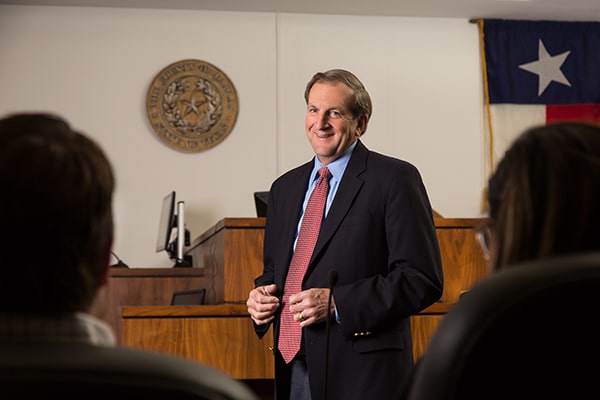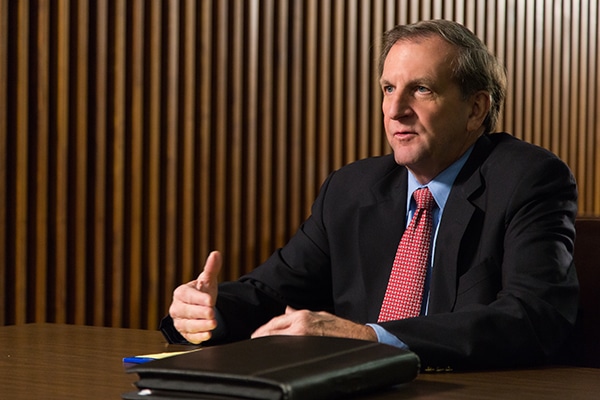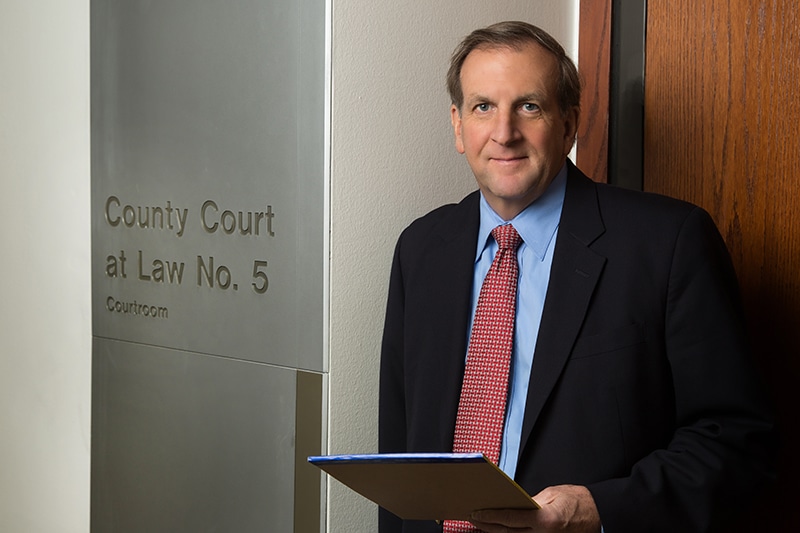Roy Atwood is an attorney, so he’s no stranger to having a commanding presence in a courtroom. But, last fall, he had to rely on others for help when he started showing signs of a stroke.
Roy was taking notes inside of the George Allen Dallas County Civil Courthouse when he dropped his notepad. He recalls struggling to pick it up. Another lawyer recognized something was wrong and alerted the judge. Everyone joined in to help Roy.
“People I didn’t even know in the courtroom reacted quickly and immediately called 911,” Roy says. “They didn’t listen to me when I kept telling them I was fine. They knew the symptoms; they knew something wasn’t right, and they were insistent I get some medical attention.”
 Roy Atwood is back in the courtroom after quick responses to his stroke symptoms saved his life.
Roy Atwood is back in the courtroom after quick responses to his stroke symptoms saved his life.
Attending to an attorney
Dallas Fire-Rescue responded to the call and took Roy to Methodist Dallas Medical Center, where he was met by Robert Simonson, DO, emergency physician on the hospital’s medical staff.
“He couldn’t tell us his name,” Dr. Simonson recalls. “We had to find his driver’s license and call his wife. He was still in a suit with his court documents and everything. He literally left the courtroom and showed up like that.”
According to Dr. Simonson, most strokes happen early in the day because that’s when our blood pressure is at its lowest.
Roy had no previous stroke symptoms, but Dr. Simonson says that’s the case for many stroke patients.
“Even if the symptoms start to resolve, it doesn’t mean it wasn’t a stroke,” Dr. Simonson says. He suggests taking someone to the hospital if you notice their face is drooping or their speech is slurred.
Roy was struggling to get his words out and was unable to move the left side of his body when he arrived at the emergency department that morning. According to Dr. Simonson, most strokes happen early in the day because that’s when our blood pressure is at its lowest.
A CT scan showed a clot blocking one of Roy’s carotid arteries, limiting blood flow to his brain. Joseph Hise, MD, an endovascular radiologist on the Methodist Dallas medical staff, placed a catheter in and through the clot to remove it.
“Dr. Hise called me within 45 minutes to an hour after he had retrieved the clot, and actually his words to me were, ‘You’re not gonna believe this, but he’s talking and moving completely,’” Dr. Simonson says.
 After Roy Atwood had a stroke while in court, he now encourages everyone to be aware of the signs.
After Roy Atwood had a stroke while in court, he now encourages everyone to be aware of the signs.
Specialized care helps stroke patients
Methodist Dallas is a Comprehensive Stroke Center, which means there is a streamlined process of stroke care for every patient who comes in with symptoms.
“For example, a neurologist and an endovascular radiologist must be on call 24/7 at Comprehensive Stroke Centers so all facets of a patient’s care can take place immediately,” Dr. Simonson says.
The day Roy arrived at the hospital, it took only three minutes for his medical team to get him off the ambulance, place him on a CT table, and call a “code stroke,” which activated the stroke team and allowed him to get prompt treatment.
Learn the signs
Roy was in the hospital for only a few days. In a matter of weeks, he was flying across the country for depositions and preparing for a trip to Europe with his wife to visit one of his five children. Thanks to the team at Methodist Dallas, the attorney is back doing what he loves and spending time with his family — something he’s very grateful for.
“I got an awesome result. I have no continuing impacts or effects from the stroke, and I attribute that to someone up above looking out for me,” Roy says.
He also encourages others to learn more about the moments that lead up to a stroke.
“Everybody needs to make themselves aware of the symptoms and signs and never hesitate if you notice something,” Roy says. “Get to a stroke center that knows what to do.”

